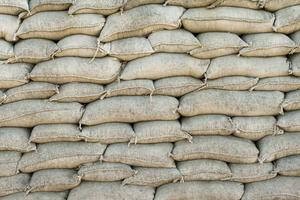 Drainage, landscaping, slope and soil are just a few of the factors that will determine if your Toronto foundation is damaged during a storm. During a long period of rainfall all of the water has to go somewhere, and naturally that’s the lowest point it can find. This is why basements often flood during heavy rains, and also why foundations commonly incur water damage.
Drainage, landscaping, slope and soil are just a few of the factors that will determine if your Toronto foundation is damaged during a storm. During a long period of rainfall all of the water has to go somewhere, and naturally that’s the lowest point it can find. This is why basements often flood during heavy rains, and also why foundations commonly incur water damage.
Did you know that it only takes a small amount of water to potentially offset and crack your entire foundation? It’s true, that’s why it’s vital to the overall wellbeing of your home to take the proper precautions during and prior to a storm.
Water is a leading cause of foundation damage. Therefore, in order to keep your home strong you must protect it against the damages inflicted by heavy storms.
Your foundation holds your entire home up and is nothing to take lightly, and we so we commend you for simply reading this blog. You’ll be thanking yourself during the next big rainfall when your home is truly prepared to weather the storm.
Protecting Your Foundation During A Storm
The rain is coming down non-stop and groundwater is starting to rise… how do you protect your foundation from water damage? Put the following 5 tips to good use and you should be good to go!
1. Make Sure Your Home Has Good Drainage
Your home’s drainage systems are key to preventing foundation issues after or during a storm. The goal is to keep the water moving away from your house, as opposed to beneath your house.
The best way to ensure this happens is to make sure your home is properly set up in regards to drainage and gutters. This means gutters must be cleaned out and ready to take on water with ease. If gutters are clogged with leaves or animal nests the water will not drain as intended, but instead cascade down the sides of your home, causing damage to siding and foundation.
Downspouts should be positioned so that they direct water at least 5-10 feet away from your home.
2. Make Sure Your Home Is Properly Sloped And Landscaped
Your yard should be landscaped so that it slopes down and away from your foundation. This helps the rain run off away from your home instead of towards it. The slope should measure a minimum of 6-inches over a 10-foot span from the foundation of your home. This prevents water from building up around the foundation and sneaking in.
If water is not directed away from your house it will create pressure on the walls of your home, leading to leaning walls, cracked masonry or leaks that lead directly to your home’s foundation.
3. Don’t Let Soil Dry Out Around Home
Don’t let the soil around your home get too dry or else the soil will shrink. When it rains dry soil rapidly expands, oftentimes too quickly for your foundation walls to handle the pressure. During a drought, even a rather short-lived one, use a soaker hose to spray the soil around your home. Make sure to run the hose at least 6-inches away from the foundation and a good 3-inches beneath the soil. This keeps the soil from contracting too much.
Dry soil is a potentially bigger problem if you have trees planted close to your home. Growing tree roots can offset and crack your home’s foundation, but also they suck up a lot of water directly from the soil. This means that moisture in soil is depleted at a faster rate. As a result, the soil will shrink and then expand even more, creating additional risks for too much pressure.
4. Test Sump Pump & Look For Leaks
- Make sure to test your sump pump annually, and during frequent storms check it even more often.
- Fix any and all water leaks right away. If you notice any dripping pipes they must be repaired ASAP.
- Seal basement walls with waterproof materials and make sure basement windows are completely sealed and closed during a storm.
- Check for dark spots on the underbelly of pipes as well as ceilings throughout your home.
- Take note of any cracked caulking and repair as needed.
- Have your roof inspected for any loose or missing shingles.
5. Sandbags
Sandbags make for a handy tool during big storms, especially if you have enough warning prior to set them up. Sandbags should be placed around your home’s foundation, as well as around any vents or other openings.
Need Help Fixing, Repairing Or Protecting Your Foundation? Call Turnbull Masonry!
Simply having a professional out to inspect your home and set you up for proper foundation protection from storms could save you thousands of dollars in repairs. In fact, it could potentially save your home from needing an entirely new foundation. Contact Turnbull Masonry today to protect or repair your Toronto home foundation!
